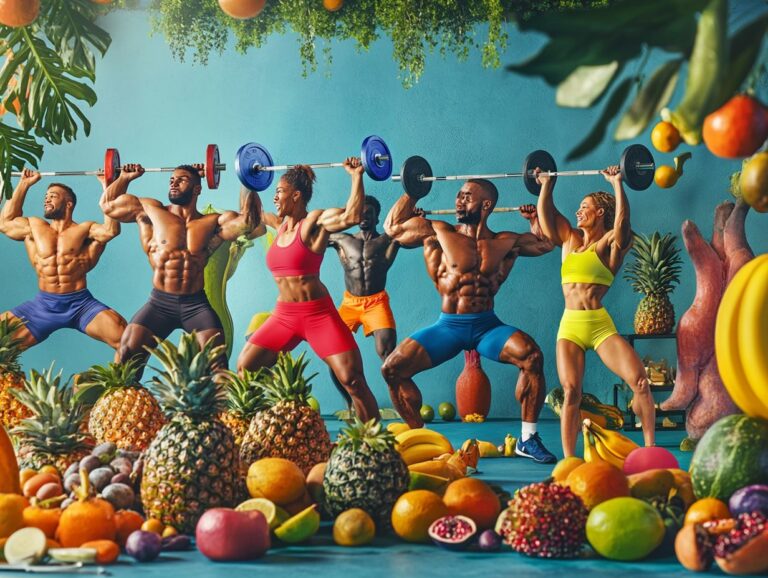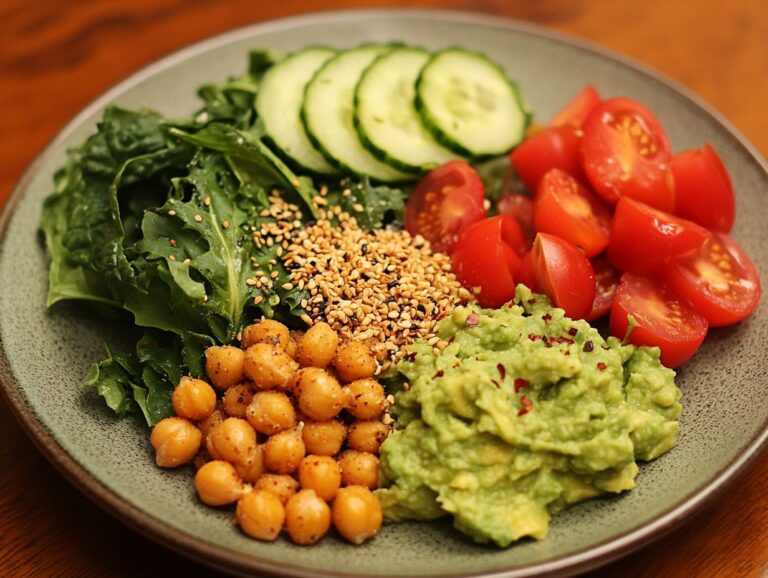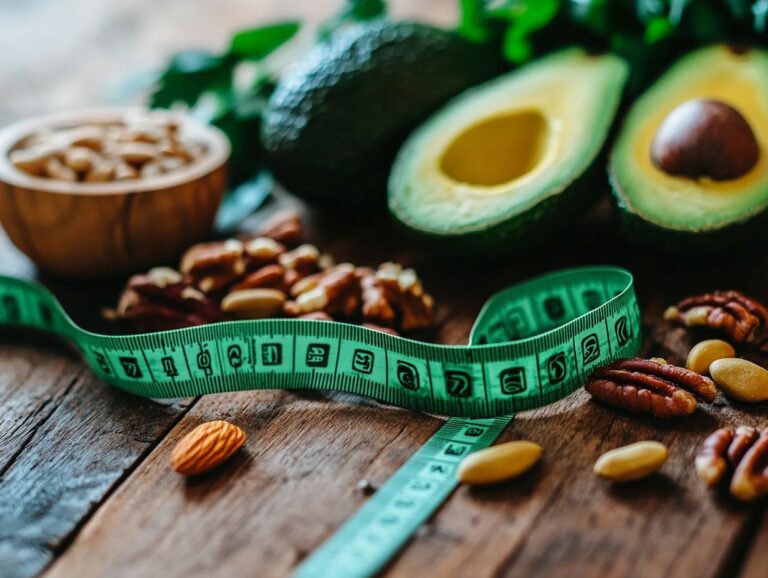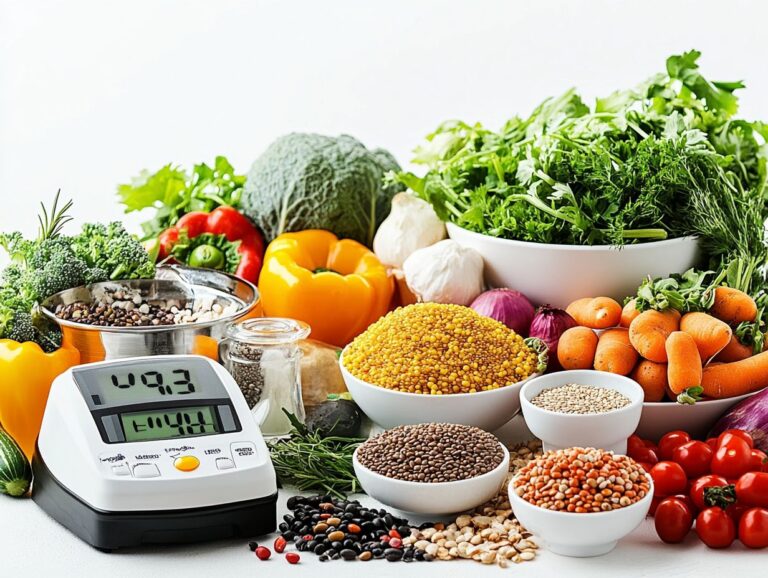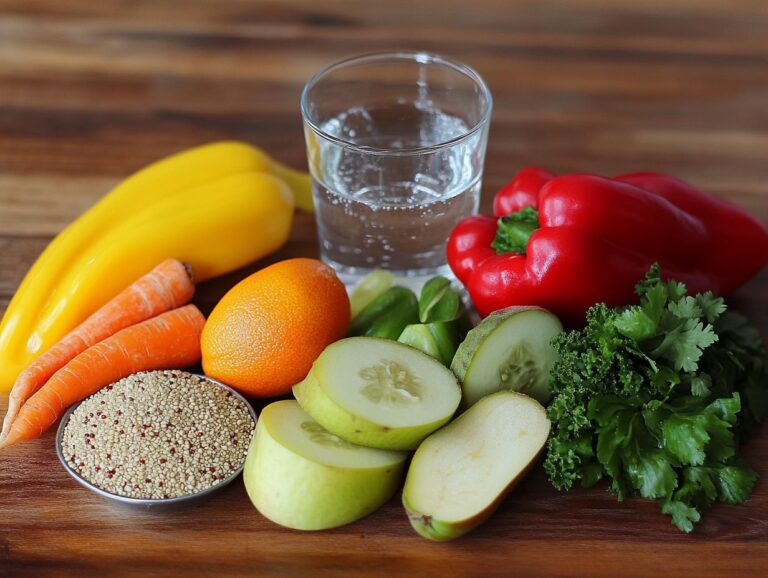This article outlines the requirements and specifics of a raw vegan diet, explaining what it means to be both raw and vegan. It covers the nutritional needs associated with a raw vegan lifestyle, including the recommended protein intake, the best sources of protein within this diet, and how to incorporate these elements into meals. Additionally, the article discusses the health benefits of maintaining adequate protein intake and the potential health risks of failing to meet these dietary requirements, such as vitamin B12 and calcium deficiency.
What is a Raw Vegan Diet?
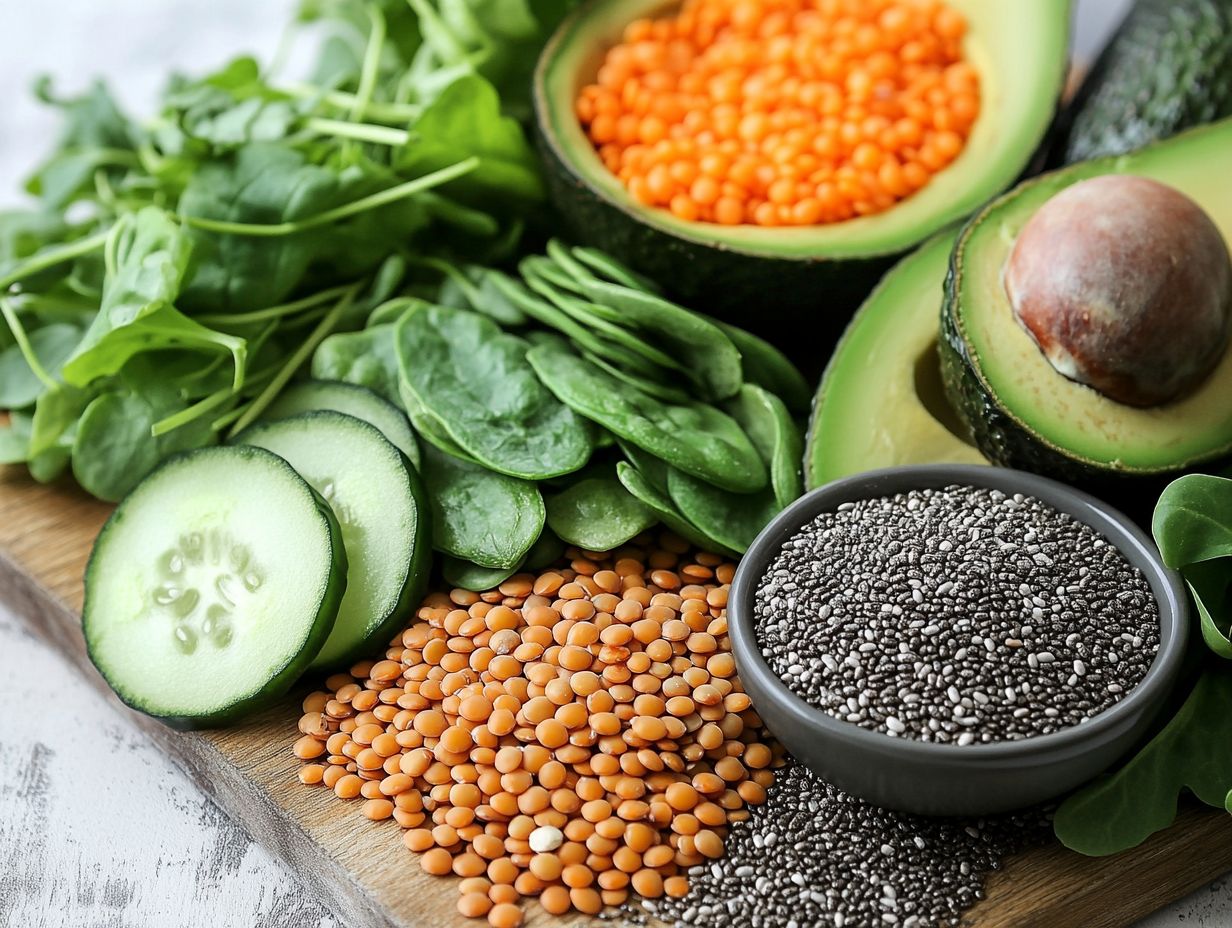
A raw vegan diet is a plant-based lifestyle change that emphasizes the consumption of uncooked and unprocessed foods, fully aligning with the principles of veganism. This diet excludes all animal products, including meat, dairy, and eggs, while focusing on fresh fruits, vegetables, nuts, and seeds to meet dietary needs and promote healthy living, including heart health and weight loss.
Adherents of a raw vegan diet believe that cooking food at certain cooking temperatures can reduce its nutritional value, and they typically consume their meals in their natural state or with minimal processing to preserve essential nutrients like vitamins and amino acids.
What Are the Nutritional Requirements for a Raw Vegan Diet, and How Does it Impact Fiber Intake?
A raw vegan diet necessitates careful planning to meet nutritional needs, ensuring adequate protein intake as well as sufficient fiber intake, vitamins, and minerals for optimal health.
Since raw vegans do not consume animal protein, they must depend on a variety of plant-based protein sources to fulfill their dietary requirements, including protein and essential amino acids typically found in animal products.
A well-balanced raw vegan diet emphasizes nutrient-rich foods such as fruits, vegetables, nuts, and seeds, which provide the necessary vitamins and minerals to support optimal health and prevent deficiencies.
How Much Protein Do You Need on a Raw Vegan Diet?
The amount of protein needed on a raw vegan diet varies based on individual factors, including activity level, age, and health. A raw vegan diet should provide sufficient protein to maintain optimal muscle mass and support bodily functions, although the recommended daily amounts will differ for each person.
It is important to balance protein sources by incorporating a variety of foods, such as quinoa, chickpeas, and soybeans. While some protein sources may contain only a limited range of amino acids, vegan or vegetarian diets can be supplemented with foods like hemp seeds or spirulina to ensure a complete amino acid profile. This approach guarantees that the body receives all the essential nutrients and proteins necessary for optimal health.
Examples of balanced protein sources in a raw vegan diet include:
- Nuts
- Seeds
- Legumes
- Quinoa
- Sprouted grains
To assess protein intake, one should consider body weight and levels of physical activity. An active individual may require more protein than someone who leads a sedentary lifestyle, while age can also influence overall protein needs.
A simple method to estimate protein requirements is to aim for 1.2 to 2.0 grams of protein per kilogram of body weight, depending on the intensity and frequency of physical activity, which helps maintain muscle mass and meets body needs.
What Are the Best Sources of Protein on a Raw Vegan Diet?
The best sources of protein in a raw vegan diet include sprouted legumes and beans, nuts and seeds (which provide both protein and healthy fats), certain grains, and specific green leafy vegetables such as leafy greens.
These raw vegan foods supply the essential nutrients required to ensure that the body receives complete protein. As a result, raw vegans can meet their protein needs without consuming animal products.
1. Legumes and Beans
Legumes and beans are excellent sources of protein for individuals following a raw vegan diet, especially when sprouted, as this process enhances their digestibility and boosts their nutritional content. These foods provide sufficient protein along with essential vitamins, minerals, and fiber necessary for overall health and digestive well-being.
Commonly used legumes in raw dishes include lentils, chickpeas, black beans, pinto beans, and adzuki beans, all of which help meet protein requirements and dietary needs.
The sprouting process increases the bioavailability of nutrients such as B vitamins, zinc, and iron, making them easier for the body to absorb.
To prepare lentil sprouts, beans, peas, or other legumes, they should not be consumed raw. Instead, they are soaked in fresh water for several hours, then rinsed and drained. The legumes are placed in a breathable container within a humid but not wet environment, and they should be rinsed regularly to prevent mold growth.
Sprouting legumes significantly enhances their nutritional profile and helps neutralize anti-nutrients like phytic acid, which can inhibit mineral absorption, thereby contributing to a more nutritious and healthful diet.
2. Nuts and Seeds
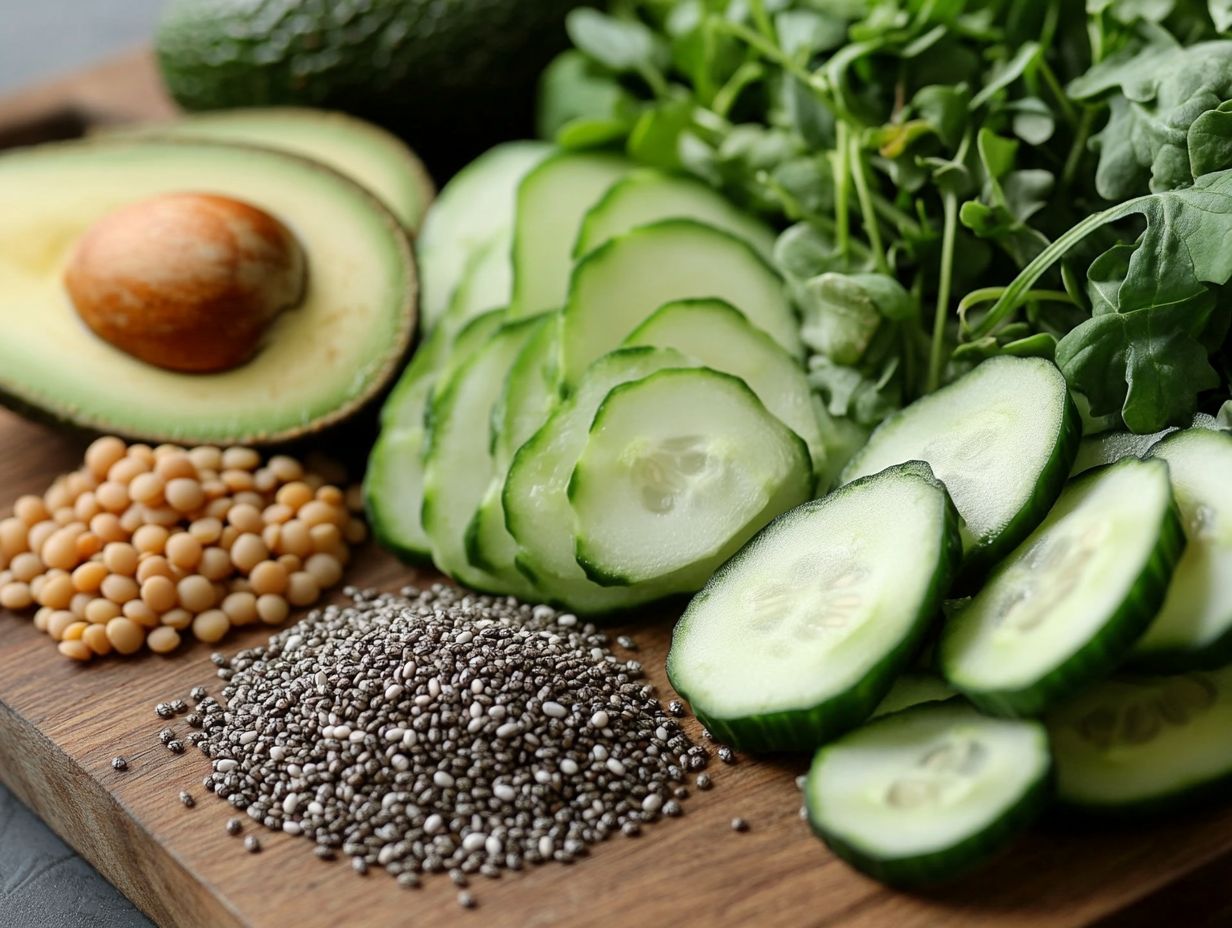
Nuts and seeds are among the most nutrient-dense protein sources available on a raw vegan diet. They offer healthy fats, vitamins, and minerals that are essential for overall health.
Almonds, walnuts, chia seeds, flax seeds, and hemp seeds are some of the most protein-rich varieties and can be easily incorporated into smoothies, protein balls, smoothie bowls, or homemade nut butter to enhance nutritional value. Collectively, these foods have been shown to support heart health and improve nutrient absorption.
Including a variety of these nutrient-dense foods in daily meals can significantly enhance an individual’s overall wellness. For instance, adding pumpkin seeds to salads or a handful of walnuts to morning oats not only introduces a contrasting texture and flavor but also provides healthy fats.
Chia seeds can be used to create a nutritious pudding or added to yogurt, contributing a creamy texture along with fiber and antioxidants. By exploring diverse and complementary uses for nuts and seeds, individuals can enrich their diets and embark on a delicious journey toward improved health, supported by community support through platforms like YouTube and Instagram.
3. Grains and Supplements
Grains can serve as an excellent source of protein in a raw vegan diet, particularly when consumed in their whole and unprocessed forms. Grains like quinoa and buckwheat, which are technically seeds, provide the body with essential amino acids and overall protein when added to salads, smoothies, or enjoyed as sprouted grains.
Their high fiber content also supports digestion and helps maintain digestive health within a balanced diet. Along with quinoa and buckwheat, other grains such as amaranth, millet, and wild rice offer great options for adding variety to meals. For those concerned about nutritional gaps, supplements like vitamin D and vitamin B12 can be considered.
These grains are rich in protein and packed with vitamins, minerals, and antioxidants that promote overall well-being. To enhance their nutritional value, these grains can be soaked or sprouted prior to consumption. Soaking activates enzymes that make the grains easier for the body to digest, which is particularly beneficial for individuals following a raw vegan diet.
4. Vegetables
Certain vegetables, particularly green leafy varieties, can contribute to protein intake in a raw vegan diet, even though their protein content is significantly lower than that of legumes and nuts. Vegetables like spinach, kale, and broccoli not only provide fiber but also essential vitamins and minerals that support overall health and wellness.
To meet dietary needs while promoting healthy living, it is important to incorporate a variety of raw vegetables into meals. Along with their protein content, these vegetables are rich in antioxidants and phytonutrients, which play a crucial role in reducing inflammation and strengthening the immune system.
To fulfill dietary requirements, it is advisable to consume a wide range of colors and types of vegetables, such as:
- Bell peppers for vitamin C
- Beets for their unique phytonutrients
Different preparation methods, such as salads, smoothies, or raw dips, can facilitate the consumption of a more diverse array of veggies. The greater the variety of vegetables included in the diet, the better the body’s chances of thriving.
How to Incorporate Protein into Your Raw Vegan Diet?
A raw vegan diet provides the necessary protein to maintain muscle mass and support various healthy bodily functions.
Individuals following this diet can obtain protein through carefully planned meals and innovative recipes.
1. Plan Balanced Meals with Raw Foods
Meal planning is essential for those following a raw vegan diet to ensure they consume adequate protein and other vital nutrients. By utilizing a variety of protein sources, individuals can create balanced meals that contain essential amino acids and other important nutrients.
Moreover, meal planning fosters creativity in preparing diverse and satisfying raw dishes. For example, one can combine sprouted lentils with sunflower and pumpkin seeds, served alongside an array of colorful bell peppers and kale to enhance nutrient absorption.
Another delicious option is a raw vegan salad featuring chickpeas, almonds, and leafy greens, all drizzled with a tahini dressing. By considering different textures and flavors, individuals can not only achieve sufficient protein intake but also enjoy a delightful eating experience that promotes healthy living and lifestyle change.
Incorporating a variety of ingredients helps prevent boredom and promotes overall health, making it easier for individuals to maintain a raw vegan lifestyle in the long term.
2. Use Protein-Rich Ingredients
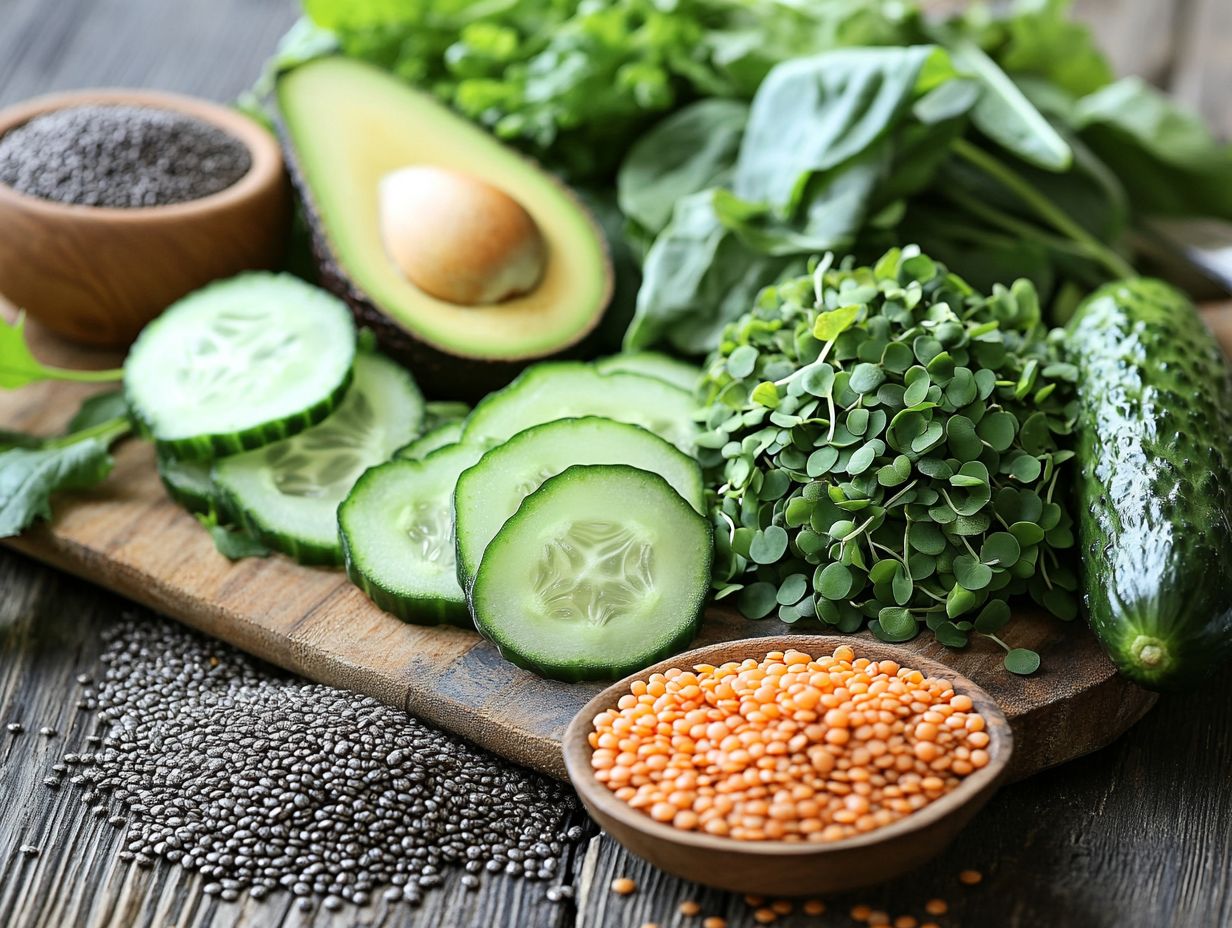
Incorporating protein-rich ingredients into raw vegan recipes can significantly boost protein intake while also introducing a variety of flavors and textures, which makes it easier to sustain a raw food diet.
Ingredients such as hemp seeds, chia seeds, and nuts enhance the protein content of raw vegan meals, including smoothies, smoothie bowls, and salads, while also contributing healthy fats and essential micronutrients that support a healthy diet and promote heart health.
By creatively integrating these protein-rich options into their recipes, individuals can enjoy delicious meals that meet their protein intake and dietary needs, ensuring they achieve adequate protein for their lifestyle.
For instance, hemp seeds can be added to a morning smoothie bowl, providing a nutty flavor and creamy texture, along with complete protein and essential amino acids which are crucial for muscle mass and overall wellness.
Chia seeds can be included in puddings or used as a thickener for raw soups, promoting digestion, supporting heart health, and contributing to fiber intake which aids digestive health.
Nuts and seeds, whether used as toppings or blended into sauces, add a satisfying crunch and a rich array of vitamins and minerals, enhancing the nutritional value of each dish.
Additionally, incorporating ingredients like spirulina or sunflower seeds can further diversify meals, enriching them with antioxidants, promoting overall health benefits, and supporting healthy living.
These versatile options, including homemade nut butter and protein powder, can easily transform any meal, from breakfast to dinner, ensuring that health-conscious eaters achieve their nutritional goals without compromising on taste.
3. Experiment with Different Recipes
Experimenting with different recipes can be a fun way to discover new meal ideas while adhering to a raw vegan diet, as it allows individuals to explore innovative methods of increasing their protein intake. Creating various dishes using raw foods—such as smoothies, protein balls, and salads—encourages the creative use of protein-rich ingredients and can be tailored to suit individual taste preferences. This experimentation can help individuals identify filling and nutritious meal options that support a healthy lifestyle.
Exploring raw food recipes opens up a wide range of flavor and texture combinations. For instance, a chocolate-flavored protein ball made from ground nuts and seeds provides a quick, on-the-go snack packed with energy and nutrition. Similarly, a simple chickpea salad with chopped veggies can serve as a hearty lunch option rich in fiber and plant-based protein.
Enhancing flavors with creative ingredients like spirulina or nutritional yeast adds complexity to dishes while boosting their nutritional value. Additionally, the incorporation of spices and herbs can elevate the meal’s taste profile, making it more enjoyable and flavorful.
These engaging culinary explorations not only make healthy eating a pleasurable experience but also enable individuals to take charge of their nutrition.
What Are the Benefits of Getting Enough Protein on a Raw Vegan Diet?
The benefits of consuming sufficient protein and essential amino acids on a raw vegan diet include maintaining muscle mass, sustaining energy levels, and supporting a healthy immune system, thereby promoting a lifestyle change towards veganism.
Adequate protein intake is essential for repairing tissues, producing enzymes and hormones, and ensuring overall bodily function. By focusing on a variety of protein sources, individuals can fully enjoy the advantages of a healthy raw vegan diet.
1. Helps Maintain Muscle Mass
Adequate protein intake is essential for maintaining muscle mass, particularly for those following a raw vegan diet, as they do not consume traditional animal protein sources such as meat and dairy.
Incorporating a variety of protein-rich plant-based foods allows individuals to meet their protein requirements, enabling the body to effectively perform muscle repair and growth functions. By including diverse protein sources, raw vegans can support their body’s needs and prevent muscle loss.
Proteins from hemp seeds, lentils, quinoa, and chickpeas provide the necessary amino acids to facilitate these functions. Plant-based proteins help muscle fibers repair themselves after exercise and promote the formation of new muscle tissue.
Additionally, nuts and seeds, such as almonds and chia seeds, offer further protein while supplying healthy fats that contribute to overall health. A combination of these nutrient-dense foods can help individuals maintain optimal muscle function and enhance recovery times.
2. Provides Energy and Satiety
Protein is essential for providing energy and promoting satiety for those following a raw vegan diet, as it helps curb hunger and maintain overall energy levels throughout the day. A protein-rich diet can prevent blood sugar spikes, ensuring a consistent supply of energy while managing cravings.
By incorporating protein sources into meals and snacks, raw vegans can feel fuller for longer and sustain their energy levels during busy days. This nutrient not only enhances feelings of fullness but also helps stabilize blood sugar levels by slowing the absorption of carbohydrates. As a result, individuals can avoid the energy dips often experienced after consuming high-carb meals.
To easily incorporate protein into daily meals, raw vegans can add plant-based protein sources such as:
- Legumes
- Nuts
- Seeds
- Certain grains like quinoa
to salads and smoothies. These foods also provide additional vitamins and minerals. Snacking on hummus with vegetables or nuts can serve as a healthy energy boost that keeps one feeling satisfied throughout the day.
3. Supports a Healthy Immune System
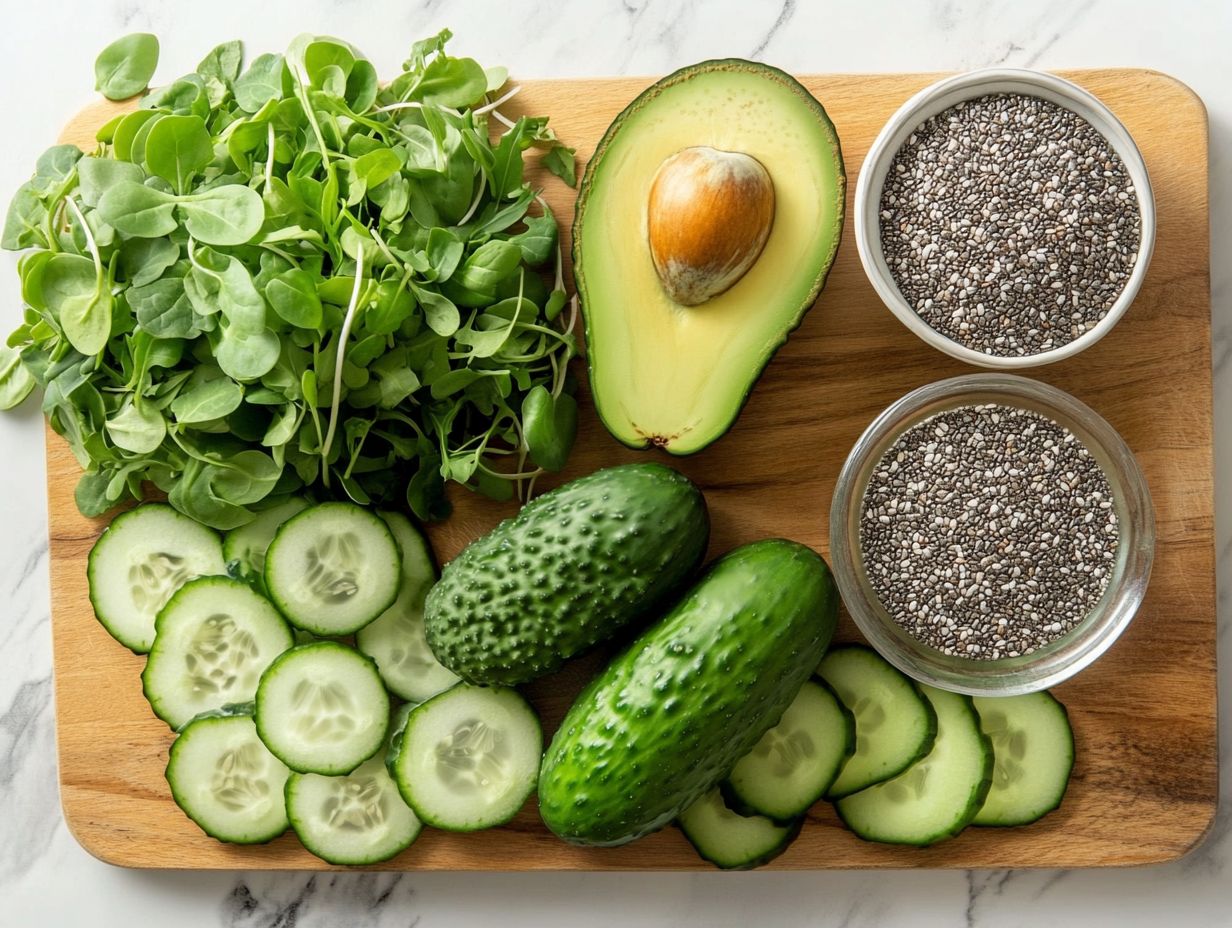
A sufficient intake of protein is essential for maintaining a healthy immune system, particularly for individuals following a raw vegan diet, where nutrient-dense foods, such as fruits and vegetables, are crucial for overall well-being and preventing vitamin B12 and calcium deficiency.
Proteins serve as the building blocks for antibodies and immune cells, helping to prevent infections and diseases. A diverse selection of protein-rich plant foods can enhance the immune defense of raw vegans and provide the health benefits associated with a varied diet.
Hemp seeds, chia seeds, and spirulina are all superfood sources of plant-based protein that can significantly impact immune function. These foods not only supply essential amino acids but also contain antioxidants that help reduce oxidative stress, which can weaken immunity. Additionally, legumes, nuts, and seeds provide important nutrients like zinc and magnesium, both of which are necessary for a healthy immune response.
Incorporating these superfood ingredients into daily meals can lead to improved health outcomes, allowing individuals to thrive on a raw vegan diet.
What Are the Risks of Not Getting Enough Protein on a Raw Vegan Diet?
Not consuming enough protein on a raw vegan diet can lead to several risks, including muscle loss, nutrient deficiencies, fatigue, and other health risks associated with inadequate protein and nutrient intake.
Insufficient protein intake can result in muscle wasting and decreased strength, negatively impacting physical performance.
Additionally, a raw vegan diet low in protein may lack essential amino acids and other crucial nutrients, contributing to deficiencies that can cause problems such as weakened immunity and increased fatigue.
1. Muscle Loss
One of the most significant dangers of inadequate protein in a raw vegan diet is muscle loss, as the body cannot repair and build tissues properly. Insufficient protein intake causes the body to break down muscle tissue for energy to meet its repair and growth requirements, resulting in decreased strength and physical performance. This muscle loss not only affects fitness levels but also diminishes the ability to perform regular daily activities, ultimately impacting overall quality of life.
When protein levels are low, a process known as muscle catabolism occurs, where amino acids are extracted from muscle fibers and utilized for energy in essential bodily functions, particularly during periods of stress or low energy. This physiological response can lead to a gradual loss of muscle mass and create a negative cycle of weakness and fatigue, further decreasing the ability to carry out daily tasks and increasing the risk of falls and injuries.
Moreover, maintaining healthy and robust muscle mass is crucial for metabolic health, as muscle tissue serves as the primary site for glucose metabolism. Low muscle mass can contribute to obesity, diabetes, and other metabolic disorders. Therefore, ensuring adequate protein intake is critical for maintaining physical health and overall well-being.
2. Nutrient Deficiencies
Nutrient deficiencies can be a significant issue for those following a raw vegan diet that lacks sufficient protein, ultimately impacting overall health and wellness. Proteins serve as the building blocks of the body, and inadequate protein intake may lead to deficiencies in other essential nutrients such as iron, zinc, and certain vitamins.
To avoid these deficiencies, it is crucial to maintain a balanced diet that includes a diverse range of protein sources, ensuring the body receives all the necessary nutrients for proper functioning.
Iron plays a vital role in the production of hemoglobin; insufficient iron can result in anemia, which often manifests as fatigue and weakness. Zinc is critical for immune function and skin health; a deficiency in zinc can raise the risk of infections and delay wound healing.
Incorporating a variety of protein-rich plant foods such as legumes, nuts, seeds, and leafy greens is essential for preventing these deficiencies in a raw vegan diet. Additionally, fortified foods and dietary supplements can help individuals maintain adequate levels of these nutrients without compromising their dietary principles.
3. Fatigue and Weakness
Fatigue and weakness can be potential effects of protein deficiency associated with a raw vegan diet, as low energy levels often result from inadequate protein consumption. When the body does not receive sufficient protein and other essential nutrients, individuals frequently report feelings of tiredness, low energy, and muscle weakness, making it challenging to perform daily activities.
Correcting protein levels is crucial for maintaining energy and supporting an active lifestyle.
The body requires protein for numerous vital functions, including muscle repair, maintaining muscle mass, and the production of enzymes and hormones that regulate various chemical reactions. When there is an insufficient supply of protein, the body begins to use muscle tissue as a source of energy, contributing to feelings of fatigue and negatively affecting muscle mass. This fatigue can negatively affect physical performance, mental alertness, and overall healthy living, leaving individuals feeling more tired and less focused.
Adequate protein intake, whether from animal protein, plant-based sources like green leafy vegetables, nuts and seeds, or protein powder, provides the necessary building blocks for energy production, enabling individuals to sustain a healthy and active lifestyle.
